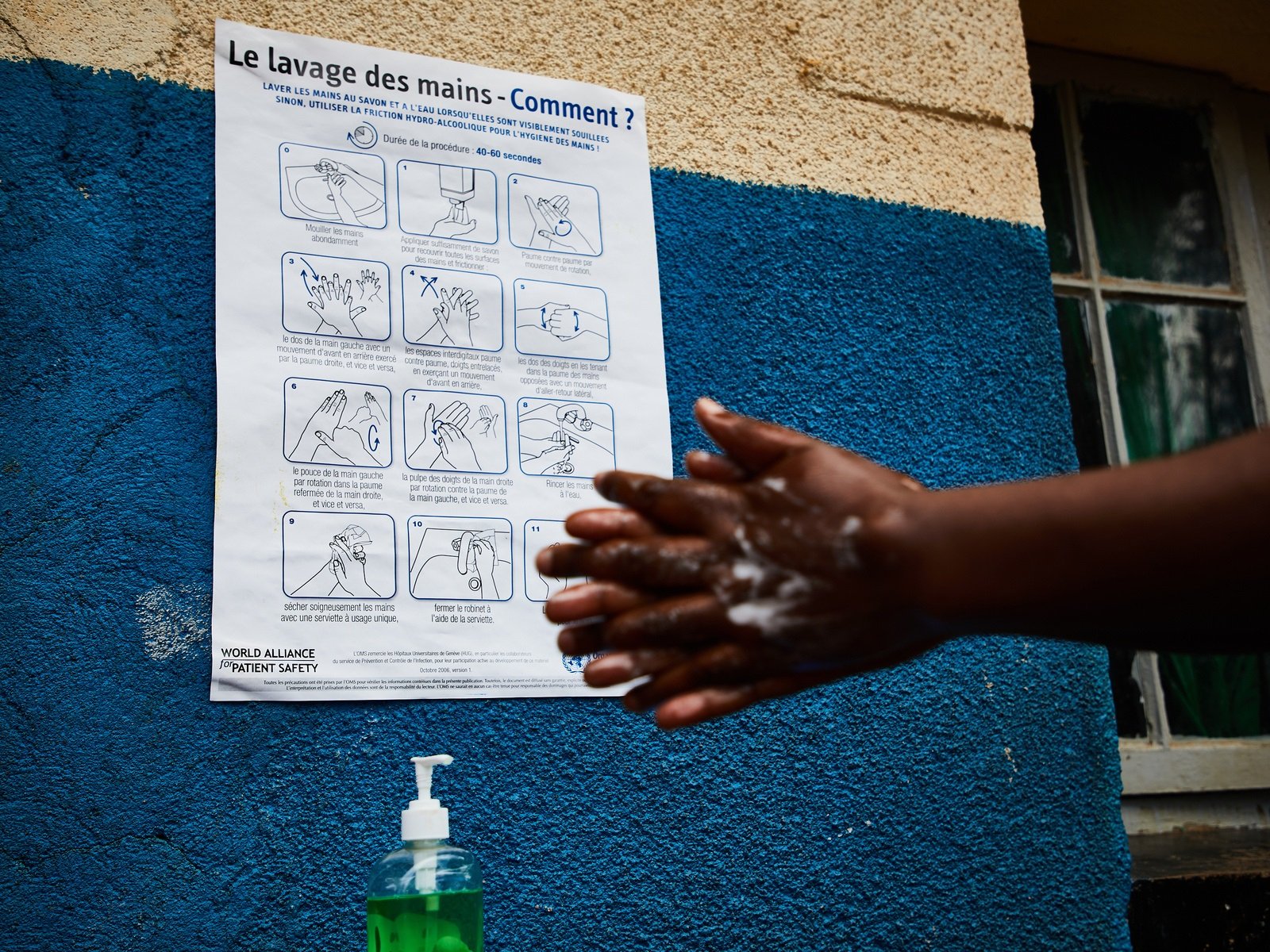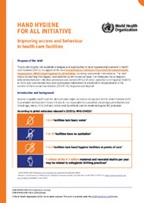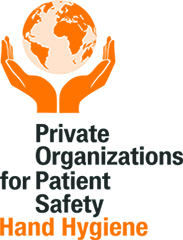
Hand hygiene
Medical gloves are crucial for preventing infection when exposed to blood and body fluids, but they don't replace proper hand hygiene.
The evidence for clean hands

The problem
Available evidence shows that compliance with hand hygiene recommendations during health care delivery remains suboptimal around the world, with an average of 59.6% compliance levels in intensive care units up to 2018, and extreme differences between high income and low income countries (64.5% vs 9.1%).
Out of every 100 patients in acute-care hospitals, seven patients in high-income countries (HICs) and 15 patients in low- and middle-income countries (LMICs) will acquire at least one health care-associated infection during their hospital stay.Most health-care facilities have an intermediate level of hand hygiene implementation or higher, for which health care facility funding and country income level are important drivers.

Handwashing and hygiene procedures at Kitatumba Hospital, Butembo. This hospital is receiving support from the WHO.
The solution
Most HAIs are preventable through hand hygiene performed at the right times.
The WHO Guidelines on hand hygiene in health care outline hand hygiene recommendations and are complemented by the WHO Multimodal hand hygiene improvement strategy, the Guide to implementation, and an implementation toolkit, which contains many ready-to-use practical tools.
The WHO multimodal improvement strategy has been shown as the most effective approach leading to practices improvements. Hand hygiene improvement programmes can prevent up to 50% avoidable infections acquired during health care delivery and generate economic savings on average 16 times the cost of implementation.
Evidence
Global report on infection prevention and control
Evidence of hand hygiene as the building block for infection prevention and control
Summary report: hand hygiene self-assessment framework survey 2015/2016
Additional literature
- A literature review of MDROs and the relationship with hand hygiene – summary pdf, 316kb
- A report on the June 2015-January 2016 WHO global Hand Hygiene Self-Assessment Framework survey
- Moment 1 Global Observation Survey pdf, 88kb
- Systematic review of automated electronic systems for hand hygiene monitoring (preliminary results) pdf, 168kb
- WHO Hand Hygiene Self-Assessment Framework Global Survey Report 2011, pdf, 413kb
- Evidence of hand hygiene to reduce transmission and infections by multidrug resistant organisms in health-care settings
- Interim results on the WHO global surveys on MDROs and surgical antibiotic prophylaxis in health care
Key publications on hand hygiene
Hand hygiene is vital for safe health care delivery, yet practices at the point of care remain suboptimal worldwide. A comprehensive research agenda...
Resource considerations for investing in hand hygiene improvement in health care facilities
Investment in all the drivers and facilitators of hand hygiene action in health care to ensure that it occurs at the point of care and other critical...

Hand hygiene for all initiative: improving access and behaviour in health care facilities
The WHO and UNICEF-led Hand Hygiene for All Initiative aims at ensuring implementation for WHO's global recommendations on hand hygiene to prevent and...
The scope of this document is to address practical aspects related to the performance of routine hand hygiene while providing outpatient care. This document...
A guide to the implementation of the WHO multimodal hand hygiene improvement strategy
WHO_IER_PSP_2009.02_chi.pdf (5.297Mb) WHO_IER_PSP_2009.02_per.pdf (1.857Mb)
WHO guidelines on hand hygiene in health care
The WHO Guidelines on Hand Hygiene in Health Care provide health-care workers (HCWs), hospital administrators and health authorities with a thorough...
Campaigns and initiatives
WHO issues many additional documents on hand hygiene in health care every year on 5 May, World Hand Hygiene Day; these can be found in the campaign specific pages.


